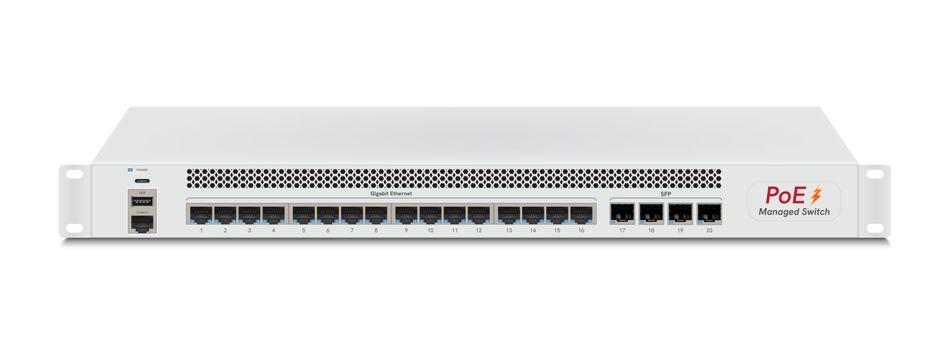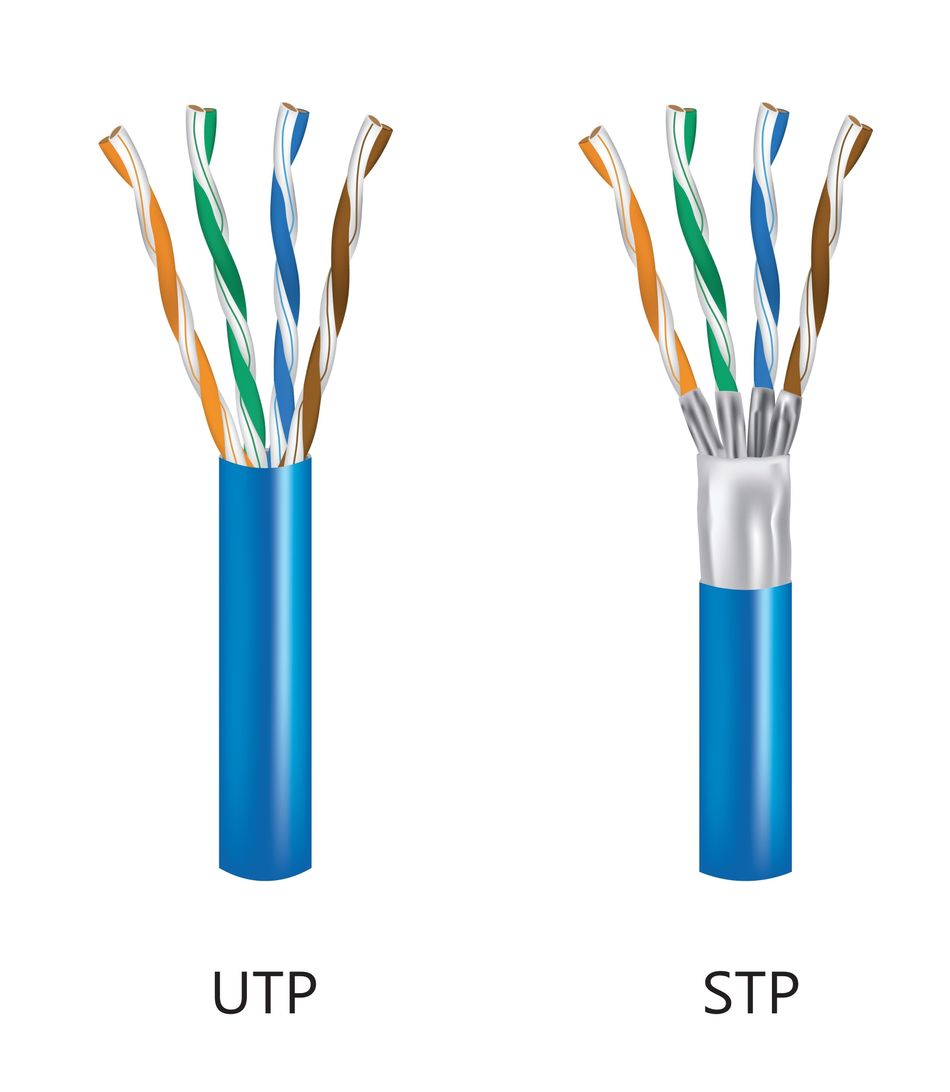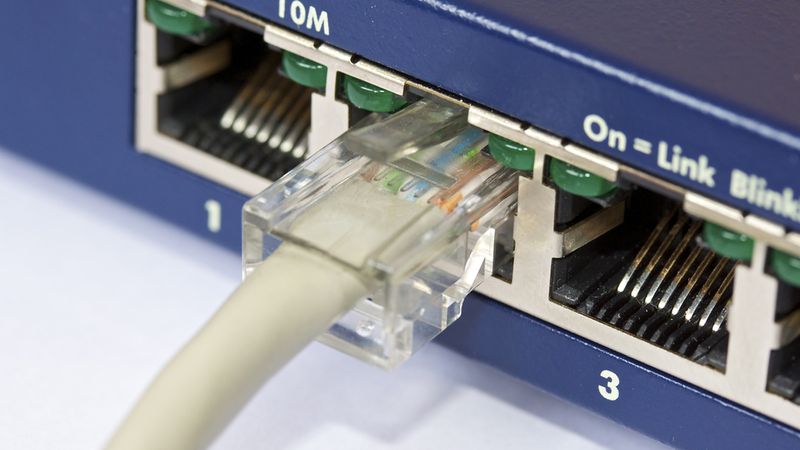Cat5e vs Cat6: Unraveling the Ethernet Cable Conundrum for Modern Networks
Ethernet Cable Showdown: Cat5e vs. Cat6 – Features, Benefits, and Recommendations
Introduction
In modern networking, Cat5e and Cat6 cables are key options for Ethernet connections, forming the backbone of our digital infrastructure in homes, offices, and data centers. As technology evolves and network demands grow, understanding the differences between Cat5e and Cat6 is crucial for making informed decisions about network setup and upgrades. Both cables offer reliable performance, but Cat5e is known for its cost-effectiveness and compatibility with existing systems, while Cat6 provides enhanced speed and future-proofing. By exploring these differences, we can choose the right cable standard to optimize our networks for current and future needs.
Recommended Reading: Wired Communication Infrastructure: Single Pair Ethernet
The Evolution of Ethernet: From Cat5e to Cat6
Physical Characteristics and Construction
 Modular plugs for solid Cat5, Cat5e, CAT6 Ethernet
Modular plugs for solid Cat5, Cat5e, CAT6 Ethernet
The transition from Cat5e to Cat6 Ethernet cables marks a significant advancement in network infrastructure due to their physical characteristics and construction differences. Cat6 cables, designed to support higher frequencies and provide better performance, use 23 AWG conductors, whereas Cat5e cables use 24 AWG. The thicker conductors in Cat6 cables allow for improved signal transmission and reduced resistance, enhancing performance at higher frequencies. Additionally, Cat6 cables are thicker (approximately 6.2 mm) compared to Cat5e (about 5.0 mm), partly due to larger conductors and extra insulation, which helps reduce crosstalk and electromagnetic interference. Cat6 cables also feature a spline, a plastic separator that runs through the cable center, minimizing crosstalk between the four twisted pairs and allowing Cat6 cables to support higher frequencies and data rates with less interference.
The transition from Cat5e to Cat6 Ethernet cables marks a significant advancement in network infrastructure due to their physical characteristics and construction differences. Cat6 cables, designed to support higher frequencies and provide better performance, use 23 AWG conductors, whereas Cat5e cables use 24 AWG. The thicker conductors in Cat6 cables allow for improved signal transmission and reduced resistance, enhancing performance at higher frequencies. Additionally, Cat6 cables are thicker (approximately 6.2 mm) compared to Cat5e (about 5.0 mm), partly due to larger conductors and extra insulation, which helps reduce crosstalk and electromagnetic interference. Cat6 cables also feature a spline, a plastic separator that runs through the cable center, minimizing crosstalk between the four twisted pairs and allowing Cat6 cables to support higher frequencies and data rates with less interference.
The following table summarizes the key physical attributes of Cat5e and Cat6 cables:
Attribute | Cat5e | Cat6 |
Conductor Thickness | 24 AWG | 23 AWG |
Overall Cable Thickness | ~5.0 mm | ~6.2 mm |
Twists per cm | 1.5-2 | 2 or more |
Spline | No | Yes (usually) |
Max Frequency | 100 MHz | 250 MHz |
Max Speed (up to 100m) | 1 Gbps | 10 Gbps (up to 55m) |
Internal Structure and Shielding
The internal structure of Cat5e and Cat6 cables is crucial for their performance and data transmission efficiency, with both types utilizing a twisted pair design. This design, consisting of four pairs of insulated copper wires twisted together, reduces electromagnetic interference and crosstalk, ensuring signal integrity. Cat6 cables typically feature more twists per inch and tighter twisting specifications than Cat5e, resulting in better noise cancellation and higher frequency operation. While Cat5e cables are generally unshielded (UTP), relying on their twisted pairs for noise reduction, Cat6 cables come in both unshielded (UTP) and shielded (STP) variants. Shielded Cat6 cables can include an overall foil shield (F/UTP) or individual pair shielding (S/FTP), offering enhanced protection against interference.
These structural differences significantly impact performance: Cat6 cables reduce crosstalk, resist electromagnetic interference, and support frequencies up to 250 MHz, compared to Cat5e's 100 MHz. The improved signal-to-noise ratio of Cat6 allows for more reliable data transmission. Key features include Cat5e's four twisted pairs of 24 AWG copper wire, typically unshielded and supporting up to 100 MHz, versus Cat6's four twisted pairs of 23 or 24 AWG wire, available in shielded variants, supporting up to 250 MHz, with higher twist ratios and often including a plastic spline for further crosstalk reduction.
Performance Face-off: Cat5e vs Cat6
Speed and Bandwidth Capabilities
In Ethernet networking, speed and bandwidth are key factors differentiating Cat5e and Cat6 cables, directly affecting network performance and supported applications. Cat5e cables support speeds up to 1 Gigabit per second (Gbps) over distances up to 100 meters, which is sufficient for most home and small business networking needs, such as high-speed internet, file sharing, and streaming media. They operate at frequencies up to 100 MHz, enabling this level of performance. Cat6 cables, however, offer higher performance, supporting speeds up to 10 Gbps over 55 meters and 1 Gbps up to 100 meters, thanks to their ability to operate at frequencies up to 250 MHz, more than double that of Cat5e. The bandwidth difference—100 MHz for Cat5e and 250 MHz for Cat6—allows Cat6 to transmit more data simultaneously, enhancing performance, particularly in high-bandwidth environments.
This difference has practical implications: Cat6 is better for future-proofing against evolving network technologies and rising data demands, managing network congestion by handling more simultaneous data streams, supporting high-bandwidth applications like large file transfers or 4K streaming, and accommodating network expansion with added bandwidth-hungry devices or services.
The following table summarizes the key speed and bandwidth comparisons between Cat5e and Cat6:
Characteristic | Cat5e | Cat6 |
Maximum Frequency | 100 MHz | 250 MHz |
Maximum Speed (up to 100m) | 1 Gbps | 1 Gbps |
Maximum Speed (up to 55m) | 1 Gbps | 10 Gbps |
Suitable for 10GBASE-T | No | Yes (up to 55m) |
Bandwidth Capacity | Good | Excellent |
Signal Quality and Interference Resistance
In high-performance networking, signal quality and interference resistance are crucial for reliable data transmission. Crosstalk occurs when an electrical signal in one wire induces interference in adjacent wires, potentially causing data corruption. The signal-to-noise ratio (SNR) measures signal strength relative to background noise, with a higher SNR indicating a clearer signal. Cat5e cables use a twisted pair design to reduce crosstalk, but their effectiveness diminishes at higher frequencies. In contrast, Cat6 cables have tighter twists and often include a spline or separator between pairs to minimize crosstalk.
They also use improved insulation and shielding techniques, enhancing resistance to electromagnetic interference. This results in better signal quality and higher SNR for Cat6, especially at frequencies up to 250 MHz compared to Cat5e's 100 MHz limit. Cat6 offers lower bit error rates, higher throughput, improved resistance to interference, and better performance in high-density installations, making them ideal for environments with high electromagnetic interference or where maximum reliability is essential, such as data centers and industrial settings. While Cat5e is adequate for many applications, Cat6's superior signal quality and interference resistance provide a more robust foundation for demanding network infrastructures.
Maximum Cable Length and Performance
The maximum effective length of Ethernet cables is crucial for maintaining network performance and reliability. Both Cat5e and Cat6 cables have a standard maximum length of 100 meters (328 feet) to ensure signal integrity and minimize attenuation. While both can support 1 Gbps speeds over this distance, their performance diverges at higher speeds. Cat5e maintains its 1 Gbps capability over the full length, but Cat6 is limited to 55 meters (180 feet) for 10 Gbps transmissions to ensure optimal performance. This length-speed relationship is critical in scenarios like data centers, large office spaces, industrial environments, and campus networks, where high-speed connections and long cable runs are common. Factors such as signal attenuation, crosstalk, and propagation delay impact performance as cable length increases. In cases where cable length exceeds the maximum effective limit, strategies like using signal boosters, intermediate switches, or fiber optic cables may be necessary. Understanding these relationships is essential for designing efficient and reliable network infrastructures.
While both cable types share the same maximum length, their performance characteristics differ, especially at higher speeds. Cat5e cables can maintain their rated speed of 1 Gbps over the full 100-meter run. Cat6 cables, however, exhibit more complex behavior at higher speeds. At 1 Gbps, Cat6 performs similarly to Cat5e over the full 100 meters. However, for 10 Gbps transmission, Cat6 cables are limited to 55 meters (180 feet) to maintain optimal performance.
Cost-Benefit Analysis: Making the Right Choice
Initial Investment vs Long-term Value
When considering Cat5e versus Cat6 cables, the initial cost difference is a significant factor in decision-making. Cat5e cables are generally less expensive, with prices ranging from $0.20 to $0.30 per foot, while Cat6 cables cost between $0.40 and $0.60 per foot. This price difference extends to associated components such as connectors and wall mounts.
The following table compares the costs and benefits of Cat5e and Cat6 cables for different use cases:
Factor | Cat5e | Cat6 |
Cost per foot | $0.20 - $0.30 | $0.40 - $0.60 |
Max speed (up to 100m) | 1 Gbps | 1 Gbps |
Max speed (up to 55m) | 1 Gbps | 10 Gbps |
Frequency | 100 MHz | 250 MHz |
PoE efficiency | Good | Better |
Future-proofing | Limited | Superior |
For home users with basic networking needs, the cost savings of Cat5e may be justified. However, small businesses and enterprises should consider the long-term value of Cat6, especially if they anticipate increased bandwidth demands or plan to implement advanced networking technologies in the future.
Application-Specific Recommendations
Basic Internet Usage and Streaming: Cat5e is sufficient and cost-effective.
High-Bandwidth Applications (e.g., 4K Streaming, Large File Transfers): Consider Cat6 for future-proofing.
Small Offices:
Current Gigabit Network Needs: Cat5e meets immediate requirements.
Growing Businesses with Increasing Data Demands: Invest in Cat6 for scalability.
Data Centers:
High-Density, High-Performance Environments: Cat6 is strongly recommended.
10 Gigabit Ethernet Connections: Use Cat6 for distances up to 55 meters.
Power over Ethernet (PoE) Considerations:
Basic PoE Applications (e.g., VoIP Phones): Cat5e is adequate.
High-Power PoE Devices (e.g., Security Cameras, Wi-Fi 6 Access Points): Cat6 offers better heat dissipation and power transmission.
Recommendations for Different Use Cases:
Home Users with Future-Proofing in Mind: Choose Cat6.
Small Businesses on a Tight Budget: Opt for Cat5e with strategic Cat6 deployment.
Enterprises with High-Performance Needs: Use Cat6 throughout.
PoE-Heavy Installations: Opt for Cat6 for better power handling.
Long Cable Runs (>55m) with 10 Gbps Requirements: Consider Cat6a or fiber optic cables.
Conclusion
Cat5e and Cat6 cables represent different generations of Ethernet technology, each with distinct characteristics and capabilities that influence data transfer efficiency and network performance. Cat6 offers superior performance with its higher bandwidth (250 MHz vs. 100 MHz), better crosstalk prevention, and support for 10 Gigabit Ethernet over shorter distances, making it an ideal choice for demanding applications and high-speed data transfer. While more limited in performance, Cat5e remains a cost-effective solution for many current networking needs, particularly in home network setups where 1 Gbps speeds are sufficient.
When choosing between Cat5e and Cat6, consider your current and future networking requirements. For home users and small offices with basic needs, Cat5e may suffice and is compatible with existing jacks and patch panel network cables. However, for businesses anticipating growth, data-intensive applications, or the need for future-proofing, Cat6 is the recommended choice. The slightly higher cost of Cat6 is often justified by its enhanced performance, longevity, and ability to support emerging technologies with faster Mbps capabilities.
Scalability is a crucial factor in network infrastructure planning. While Cat5e can handle most current applications, Cat6 provides a buffer for increasing bandwidth demands and ensures a smoother transition to more advanced systems. Investing in Cat6 cables and compatible network components, such as Cat6 jacks and patch panels, can prevent costly and disruptive upgrades in the future.
As we progress into an era of increasingly connected and data-driven environments, the foundation of our digital infrastructure becomes ever more critical. The choice between Cat5e and Cat6 is not just about addressing current needs but also about envisioning and preparing for the network demands of tomorrow.
Frequently Asked Questions
Can I use Cat6 cables with Cat5e equipment?
Yes, Cat6 cables are backward compatible with Cat5e equipment. They will function at the lower Cat5e specifications when used with Cat5e-rated hardware.Is Cat6 always better than Cat5e for home use?
Not necessarily. For most home applications, Cat5e is sufficient. Cat6 becomes advantageous for future-proofing or for homes with high bandwidth needs, such as those running multiple 4K streams or large file transfers.What is the maximum length for Cat5e and Cat6 cables?
Both Cat5e and Cat6 cables have a maximum length of 100 meters (328 feet) for optimal performance. However, Cat6 can only support 10 Gigabit Ethernet up to 55 meters.How does Cat6 improve Power over Ethernet (PoE) performance?
Cat6 cables typically use thicker conductors (23 AWG vs 24 AWG in Cat5e), which allows for better heat dissipation in PoE applications, particularly in high-power scenarios or bundled cable installations.Are there visual differences between Cat5e and Cat6 cables?
Cat6 cables are often slightly thicker due to larger conductors and may include a spline (a plastic separator between wire pairs). The cable markings will also indicate the category type.Is it worth upgrading from Cat5e to Cat6 in an existing network?
It depends on your needs. If your current network meets your speed and reliability requirements, upgrading may not be necessary. However, if you're experiencing performance issues or planning for future high-bandwidth applications, upgrading to Cat6 could be beneficial.How do Cat5e and Cat6 differ in terms of crosstalk prevention?
Cat6 cables have more stringent specifications for reducing crosstalk. They often include better insulation, tighter twists in the wire pairs, and sometimes a spline to separate the pairs, all of which contribute to improved signal quality and reduced interference
References:
[1] Cat5e vs Cat6
[2] The Difference Between Cat5e & Cat6 Ethernet Cable
[3] Applications run on Cat5e, Cat6, and Cat6a
Table of Contents
IntroductionThe Evolution of Ethernet: From Cat5e to Cat6Physical Characteristics and ConstructionModular plugs for solid Cat5, Cat5e, CAT6 EthernetInternal Structure and ShieldingPerformance Face-off: Cat5e vs Cat6Speed and Bandwidth CapabilitiesSignal Quality and Interference ResistanceMaximum Cable Length and PerformanceCost-Benefit Analysis: Making the Right ChoiceInitial Investment vs Long-term ValueApplication-Specific RecommendationsConclusionFrequently Asked QuestionsReferences:
